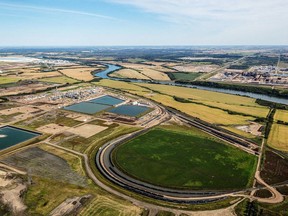Cocaine, Guns And Gushers: Colombia’s Oil Industry Struggles To Reactivate
- Rising security risk and rural violence, which is mostly fueled by the vast profits generated by the cocaine trade, is a key deterrent to attracting onshore oil investment in Colombia.
- According to the UN, Colombia’s cocaine production during 2020 increased by 8% compared to a year earlier, despite a 7% decrease in the volume of land used for coca cropping.
- Despite the risks associated with operating in onshore Colombia, the Andean country’s 2021 bid round found some success.
Despite the groundbreaking 2016 peace deal between the Colombian government and the largest guerilla group the Revolutionary Armed Forces of Colombia (FARC – Spanish initials) there are fears that conflict is escalating once again. Colombia, which is Latin America’s third-largest petroleum producer and the world’s largest manufacturer of cocaine for nearly a century, has been caught in a simmering low-intensity asymmetric conflict that reached boiling point during the 1980s. The primary flashpoint for the civil conflict, which currently engulfs Colombia and failed to end with the 2016 FARC peace accord was the April 1948 assassination of Liberal Party leader Jorge Gaitan in Bogota. That sparked the Bogotazo, days of violent rioting that swept across Bogota resulting in up to 3,000 deaths, which eventually evolved into a vicious 10-year civil war between the Colombian Liberal and Conservative parties known as La Violencia. While that brutal struggle ended in a 1958 power-sharing agreement between Colombia’s leading political parties, it sowed the seeds for the current low-intensity multiparty asymmetric conflict. In 1964 the Colombian Communist Party formed the Revolutionary Armed Forces of Colombia (FARC – Spanish initials) after a military attack on the community of Marquetalia, a Communist peasant enclave established during the of La Violencia. That event saw the communist FARC emerge as the most powerful left-wing anti-government armed group during the conflict. The guerillas eventually cut ties with the Colombian Communist Party and increasingly relied upon kidnapping, extortion, and cocaine trafficking to fund their operations. Prior to these events, which cast Colombia into what appears to be a never-ending low-intensity asymmetric multiparty civil conflict, oil was discovered in 1918 at the La Cira-Infantas field in the Middle Magdalena Basin near the city of Barrancabermeja. Even after additional petroleum discoveries in the Middle Magdalena Basin, it was not until the giant Caño Limon, Cusiana, and Cupiagua oilfields were discovered between 1983 and 1993 that Colombia embarked on becoming a major oil producer. Those mega discoveries and a notable increase in foreign energy investment, as well as petroleum production, occurred despite violence surging because of the tremendous influx of profits from the booming cocaine trade.
Even the tremendous escalation of violence, homicides, kidnappings, and attacks on energy infrastructure which escalated in the late-1980s, lasting well into the early 21st century, had little material impact on Colombia’s hydrocarbon sector. By 1991 Colombia was pumping over 400,000 barrels per day, more than double its output in 1985, despite becoming the world’s murder capital with a homicide rate of 84 intentional killings per 100,000 people. That was more than eight times greater than the U.S. which reported 9.8 homicides per 100,000 head of population, 7-times higher than neighboring Venezuela’s murder rate of 12 and 8-times larger than Ecuador’s 11 homicides per 100,000 people.
Heightened insecurity and violence remained a persistent problem in Colombia, even after the collapse of the Medellin and Cali cartels, as the FARC and National Liberation Army ELN (Spanish initials) ramped-up operations as vast revenue flowed in from the drug trade. By 2000, after President Andres Pastrana’s peace negotiations with the FARC had failed, the leftist guerillas controlled a 42,000 square mile territory in southeastern Colombia and kidnappings had surged to a record high of 3,500 for the year. Even those events failed to have any material impact on Colombia’s oil boom. A combination of soaring oil prices and rapidly improving internal security during the early 2000s, because of Plan Colombia and President Alvaro Uribe’s military campaign against the FARC, saw foreign energy investment and hence crude oil production growth.
During 2003 when Brent averaged $28.83 per barrel, a 15% increase over 2002, Colombia pumped an average of 550,000 barrels of crude oil per day. When Brent had soared to over $140 per barrel during 2008, annual petroleum production averaged 600,000 barrels daily and kept growing to peak at a yearly record of just over 1 million barrels per day by 2013. Since 2016 Colombia’s petroleum output has been in terminal decline impacted at first by the late-2014 oil price crash, sharply rising violence, and finally because of the fallout from the COVID-19 pandemic. Even the 2017 demobilization of the largest leftist guerilla group the FARC, after a 2016 peace agreement was struck with the government of President Juan Manuel Santos, has done little if anything to arrest Colombia’s production decline. That in part can be blamed on current President Ivan Duque’s reluctance to fully implement the peace deal, contributing to an increase in violence and civil unrest in regional Colombia.
Related: Southeast Asia’s Oil And Gas Output May Never Recover To Pre-COVID Levels
During 2020, the crisis-driven Andean nation only pumped on average 781,300 barrels of crude oil per day as the COVID-19 pandemic, related national quarantine lockdown and sharply weaker oil prices impacted investment as well as production. More worrying, is that despite the pandemic lockdown ending by September 2020 and energy investment increasing, average petroleum output only reached 734,231 barrels per day for the first 10 months of 2021 which is 6% less than the full year 2020. That disappointing decline occurred because of heightened civil unrest with anti-government protests sweeping across Colombia during late- April 2021 lasting into May and early-June 2021. Falling crude oil output can also be attributed to rising insecurity in regional areas, where petroleum industry operations are concentrated, fueled by a marked uptick in violence related to the activities of illegal armed groups and cocaine production.
It is the cocaine trade that is an enduring problem for Colombia. The tremendous profits that the trade generates are responsible for fueling what is a near-perpetual low-level asymmetric conflict where only the illegal armed actors change as the various groups fragment and reform. Estimates vary, but Colombia’s government believes the civil conflict has claimed up to 260,000 lives and displaced at least 9 million people. According to the UN Colombia’s cocaine production during 2020 increased by 8% compared to a year earlier, despite a 7% decrease in the volume of land used for coca cropping and an 18% increase in seizures. The scale of massive profits generated by cocaine is highlighted by former finance minister Juan Carlos Echeverry’s estimate (Spanish) that the drug trade generates $8 to $12 billion annually, which is equivalent to 5 to 4% of Colombia’s gross domestic product. Using Echeverry’s numbers the cocaine trade is contributing the same amount, if not more, to Colombia’s GDP than the oil industry which based on DANE data (Spanish) for the first 3 quarters of 2021 was responsible for 3% of GDP.
Rising security risk and rural violence, which is mostly fueled by the vast profits generated by the cocaine trade, is a key deterrent to attracting onshore oil investment in Colombia. A combination of security risks and mature assets saw Occidental Petroleum, in October 2020, sell its Colombian onshore petroleum assets in an $825 million deal, although the company retained its offshore exploration blocks. Despite the risks associated with operating in onshore Colombia, the Andean country’s 2021 bid round found some success. Seven companies made offers for 30 of the 53 blocks (Spanish) on offer with initial investment expected to exceed $148 million. Five of the offers came from national oil company Ecopetrol or its subsidiaries and 21 from intermediate energy companies with existing operational presence in Colombia, Parex Resources, Frontera Energy, and Canacol Energy. This indicates that Colombia is struggling to attract foreign onshore energy investment because of the heightened security risks coupled with high breakeven prices and elevated carbon content of the sour heavy crude oil produced.
By Matthew Smith for Oilprice.com













